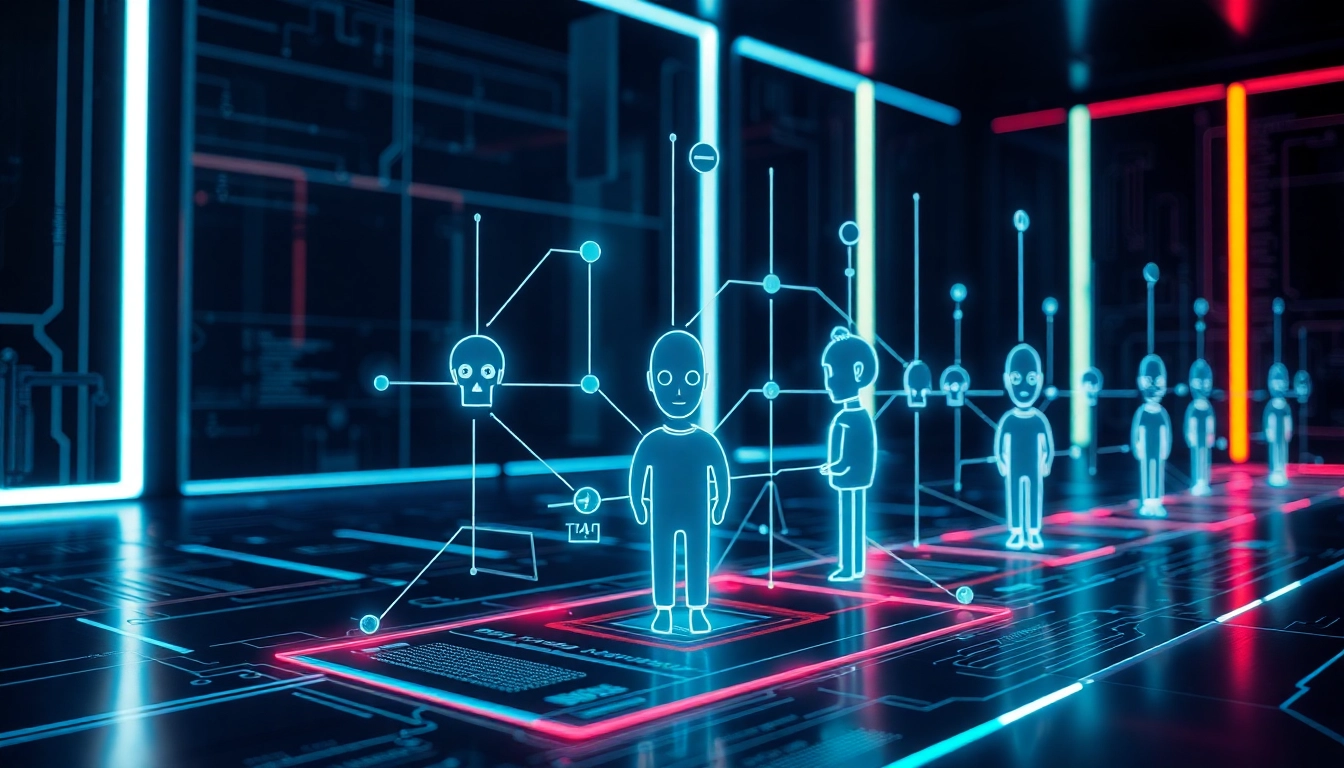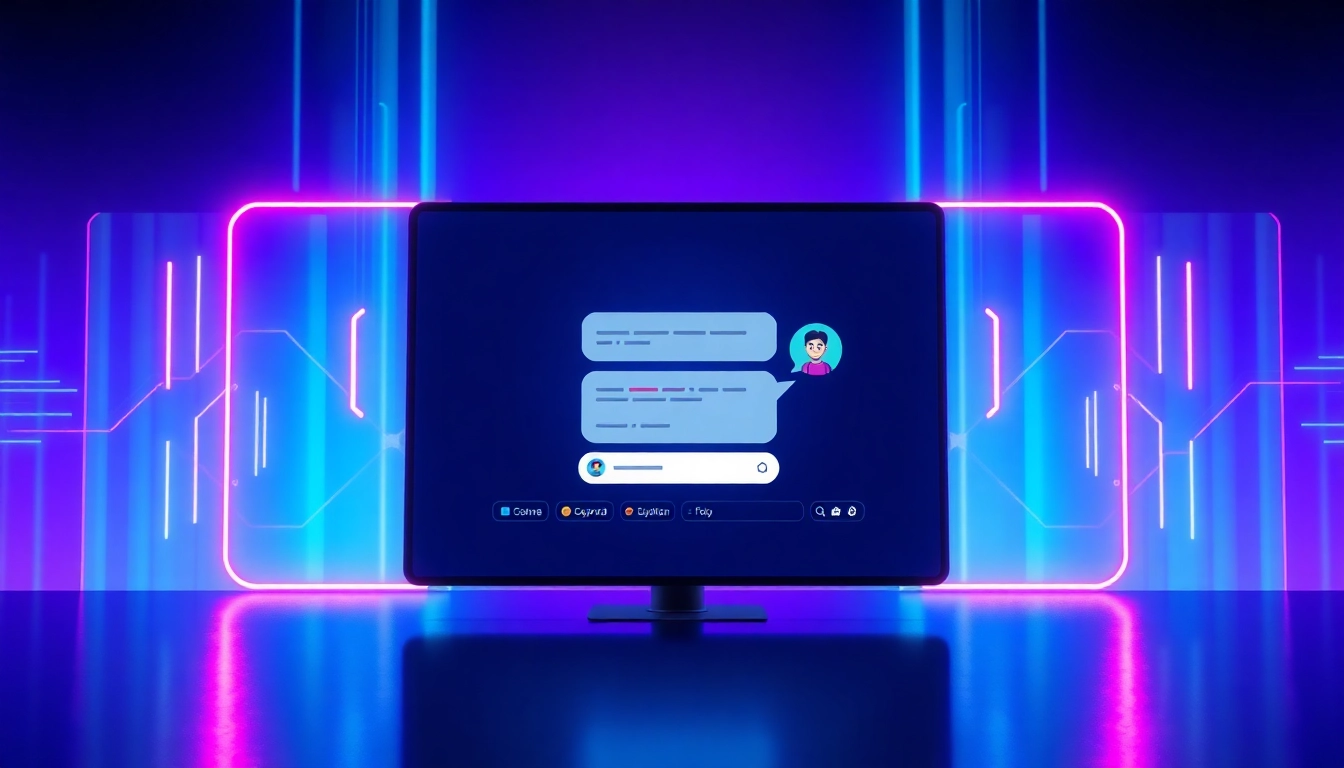Understanding the Evolution of Language and AI: A Deep Dive into DILF and CrushOn AI’s Role in Modern Conversations
In the rapidly evolving landscape of internet culture, slang terms and cultural references have become more than just casual jargon—they are powerful tools that shape online communities and social interactions. One such term that has gained significant popularity in recent years is dilf crushon.ai. This term encapsulates a complex blend of cultural significance, humor, and evolving social norms, and it exemplifies how digital platforms influence language development. As technology advances, especially in the realm of artificial intelligence, the way we create, interact with, and understand such terms continues to transform. Platforms like CrushOn AI are at the forefront of this transformation, offering innovative tools that enable users to craft personalized AI characters and engage in dynamic conversations that reflect current slang, cultural trends, and individual personalities.
The Origins of DILF and Its Cultural Context
What Does DILF Mean? Origins and Definitions
The acronym DILF stands for “Dad I’d Like to F*,” a provocative and humorous term that originally emerged within youth and internet culture. It is a play on the more traditional slang “MILF” , which gained widespread popularity in the early 2000s through movies, music, and online communities. DILF, however, shifts focus to older, paternal figures who embody attractiveness, charisma, or a certain rugged appeal that resonates with younger audiences. The term’s origins are somewhat nebulous, but it gained prominence through social media platforms, meme culture, and online forums that celebrate and parody the concept of attractive older men, often in a tongue-in-cheek manner.
The term’s usage has evolved beyond its initial humorous or provocative intent. It now appears frequently in various contexts, from casual conversations to pop culture references, and even in marketing campaigns aimed at a specific demographic. Its popularity underscores how internet slang often blurs traditional social boundaries, creating new ways to express attraction, admiration, or humor. The term’s widespread recognition also reflects changing attitudes toward sexuality and attractiveness, especially in the digital age, where visibility and acceptance of diverse expressions of identity are more prominent than ever.
The Cultural Significance of DILF in Modern Media
Representation in Movies, Music, and Social Media
Modern media has played a pivotal role in cementing the term DILF within popular culture. Movies, television shows, and music videos often feature characters or celebrities that embody the qualities associated with the term, sometimes intentionally referencing it for comedic effect or to appeal to a younger, internet-savvy audience. For example, actors known for their rugged masculinity or paternal roles have been celebrated and labeled as DILFs by fans and media alike, fueling the term’s popularity.
Social media platforms such as TikTok, Twitter, and Instagram have accelerated the dissemination of slang like DILF. Memes, viral videos, and user-generated content often revolve around themes of attractiveness and humor related to older men, contributing to the normalization and mainstream acceptance of the term. Influencers and content creators frequently use it in captions, hashtags, and comments, reinforcing its place in casual online discourse.
This cultural phenomenon illustrates how language and media intertwine, creating new symbols and identities that resonate across generations. DILF, once a niche or taboo term, now enjoys a more normalized presence, reflecting broader societal shifts toward openness and inclusivity in discussions about attraction and age.
Online Communities and the Spread of Slang Terms
The Role of Internet Culture in Popularizing DILF
Online communities have been instrumental in shaping and spreading slang terms like DILF. Forums such as Reddit, 4chan, and niche Facebook groups serve as hubs where users share memes, jokes, and personal opinions, often playing with language in creative and humorous ways. These platforms foster a culture of parody, satire, and inclusive expression, allowing terms like DILF to evolve and gain widespread recognition.
Within these communities, the term is often used in a playful or admiring context, sometimes accompanied by images, GIFs, or videos that reinforce its meaning. This organic spread exemplifies how internet culture acts as a catalyst for linguistic innovation, transforming colloquialisms into mainstream vocabulary. The viral nature of memes and social sharing ensures that such terms reach diverse audiences quickly, embedding themselves into everyday conversations.
CrushOn AI: Revolutionizing AI Conversations and Personalization
Introduction to CrushOn AI Platform
Amidst this cultural and linguistic evolution, CrushOn AI emerges as a groundbreaking chatbot platform that leverages advanced artificial intelligence to facilitate engaging, personalized conversations. Unlike traditional chatbots, CrushOn AI allows users to create and interact with customizable AI characters that can mimic human-like dialogue, embody specific personalities, and even recall past interactions. Its intuitive platform combines cutting-edge language models like GPT-4o mini and Claude 3.5 Sonnet to generate natural, contextually relevant responses, making conversations feel genuine and immersive.
Features That Elevate User Experience
CrushOn AI offers a suite of features designed to enhance user engagement and personalization:
- Character Personality Customization: Users can choose from a library of pre-made characters or craft their own, specifying traits, backstories, and conversational styles. This feature enables tailored interactions suited for roleplay, storytelling, or casual chat.
- Contextual Memory: The platform’s memory system remembers past conversations, allowing AI characters to maintain continuity across sessions. This feature creates a more realistic and seamless interaction experience, as characters can recall details, preferences, or ongoing storylines.
- Multi-Character Group Chats: Users can engage with multiple AI characters simultaneously, fostering dynamic, multi-faceted dialogues that mimic real-life social interactions or complex storytelling scenarios.
- Cross-Device Accessibility: Available on both web and mobile apps, CrushOn AI ensures users can interact with their characters anytime and anywhere, providing flexibility and convenience.
Underlying Technology and AI Capabilities
The platform harnesses the power of state-of-the-art language models, including GPT-4o mini and Claude 3.5 Sonnet, to generate responses that are not only contextually appropriate but also nuanced and natural. These models enable AI characters to understand subtle cues, adapt their tone based on user preferences, and even simulate emotional expressions. This technological foundation ensures conversations are engaging, authentic, and capable of supporting various use cases—from casual chatting to complex roleplay scenarios.
Creating and Managing AI Characters on CrushOn AI
Designing Characters with Specific Traits and Backstories
One of the platform’s standout features is the ability to craft highly personalized AI characters. Users can select from a library of archetypes—such as friendly guides, witty companions, or fantasy figures—or create entirely original characters by defining traits, interests, and backstories. This process involves specifying personality parameters like humor style, formality level, or emotional tendencies, enabling the AI to respond in a manner consistent with the character’s identity.
For example, a user might create a detective character with a backstory involving solving mysteries, a sarcastic tone, and a love for classic noir films. Once defined, this character can be added to group chats, used in storytelling sessions, or engaged in one-on-one conversations. The ability to tailor characters makes CrushOn AI a versatile tool for writers, educators, mental health practitioners, or anyone interested in creative AI interactions.
Managing Conversation Memory and Continuity
CrushOn AI’s memory system ensures that interactions are not isolated incidents but part of a continuous narrative. When users return to chat with a character, the AI recalls previous dialogues, preferences, and storylines, creating a sense of familiarity and depth. This feature is particularly valuable for role-playing scenarios, therapy simulations, or long-term storytelling projects.
Users can also manage or reset the memory of their AI characters, allowing for fresh starts or evolving personalities. This flexibility empowers creators to experiment with different narratives or adapt characters over time, enhancing engagement and creative freedom.
The Impact of AI on Language and Cultural Trends
Shaping Modern Language Through AI Interaction
Artificial intelligence platforms like CrushOn AI are not just passive tools—they actively influence language use and cultural trends. As users interact with AI characters that embody specific slang, humor, or cultural references, they internalize and propagate these linguistic elements. For instance, a character might use contemporary slang like DILF or other internet vernacular, exposing users to new expressions and idioms.
Moreover, AI-generated content can serve as a mirror for societal shifts, reflecting evolving attitudes toward gender, sexuality, and social norms. The platform’s capacity to simulate diverse personalities and conversations encourages users to explore different perspectives, fostering cultural awareness and linguistic innovation.
The Future of AI-Driven Conversations and Cultural Trends
Looking ahead, the integration of AI into everyday communication promises to revolutionize how we learn, socialize, and entertain ourselves. As models become more sophisticated, AI characters will increasingly mimic human nuances, emotional depth, and cultural specificity. This evolution will likely lead to more immersive storytelling, personalized education, and even therapeutic applications.
Furthermore, AI-driven platforms will continue to influence slang and cultural terms, either by introducing new expressions or by popularizing existing ones within digital communities. This symbiotic relationship between technology and language will drive the next wave of cultural trends, blending human creativity with machine intelligence.
Embracing the Future: Language Evolution with AI Technology
Practical Implications for Users and Creators
For users, platforms like CrushOn AI offer a personalized, engaging way to explore language, storytelling, and social interaction. Whether for entertainment, education, or creative projects, the ability to design AI characters that reflect current slang and cultural norms enhances the authenticity and relevance of conversations.
Creators and developers can leverage these tools to produce content, develop interactive narratives, or even create virtual companions that resonate with diverse audiences. As AI technology continues to advance, the potential for innovative applications in entertainment, mental health, and education grows exponentially.
The Ethical and Societal Considerations
While AI offers exciting opportunities, it also raises important questions about authenticity, privacy, and societal impact. As conversations with AI characters become more natural and convincing, users must remain aware of the distinction between virtual interactions and real-world relationships. Ethical considerations include data security, consent, and the potential for AI to reinforce stereotypes or misinformation.
Developers and platform providers bear the responsibility to implement safeguards, promote transparency, and foster respectful use of AI technologies. Balancing innovation with ethical integrity will be crucial as AI continues to shape language and culture.
Conclusion: Navigating Language and AI in the Modern Age
The journey from internet slang like DILF to sophisticated AI-driven conversations exemplifies the dynamic interplay between culture, technology, and language. Platforms like CrushOn AI are not only transforming how we communicate but also how we perceive identity, attraction, and social norms in the digital era. By enabling the creation of personalized AI characters that can embody specific traits, recall past interactions, and adapt to evolving linguistic trends, CrushOn AI stands at the intersection of innovation and cultural expression.
As we embrace these technological advances, it’s essential to recognize the power and responsibility inherent in shaping language and social interactions through AI. Whether exploring new slang, crafting compelling stories, or engaging in casual chats, AI platforms will continue to influence cultural trends and redefine the boundaries of human-computer interaction.
Understanding the dilf meaning and its place within modern culture offers insight into how language evolves and adapts in tandem with technological progress. As AI becomes more integrated into our daily lives, it will be fascinating to see how new terms emerge, existing ones transform, and cultures continue to shift in response to these innovations.


